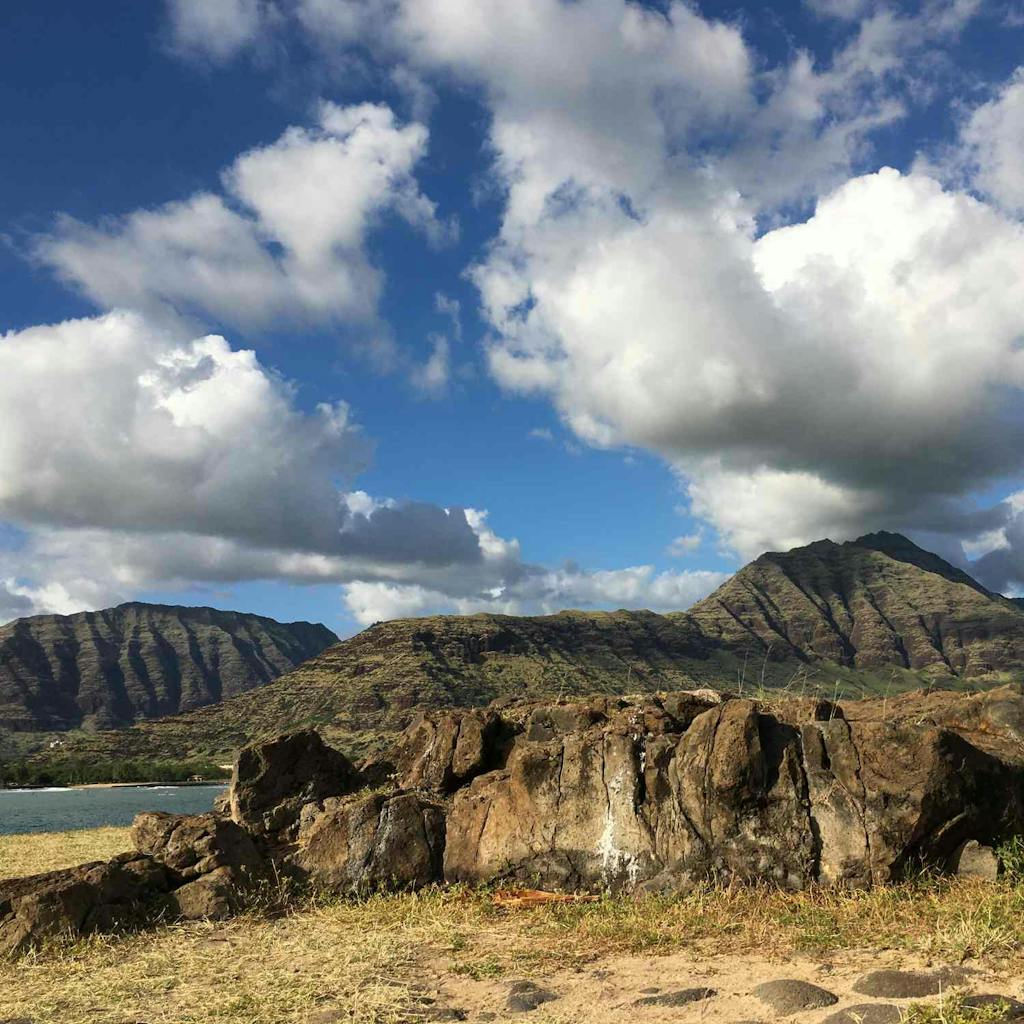The rocks of Ulupo Heiau continue to keep their ancient vigil, as new sets of hands maintain their massive formation. Heiau are traditional places of worship in Hawaii, and you’ll find them throughout the islands.
Ahead, we’ll learn about one of Oahu’s oldest heiau and how these temples have been restored and maintained across the island.
Ulupo: Oahu’s Oldest Heiau
Ulupo Heiau stands as a platform at the edge of Kawai Nui Marsh in Kailua on the windward side of Oahu. It is built with thousands of rocks, carried and placed by hand, and it stands at 10 by 180 feet with walls up to 30 feet tall. Tradition points to those rocks coming from Kualoa, which is more than ten miles away.
Ulupo Heiau is one of the oldest on the island, already abandoned by the time Kamehameha I conquered Oahu in 1795. Some legends credit menehune (mythical people of Hawaii, similar to pixies or trolls) with the construction, which confirms its antiquity more than its craftsmen.
The Kailua area may be the oldest settlement on the island. When the first Hawaiians arrived, they would have been able to sail into a bay where the marsh now stands. When the site was built, it would have been surrounded by large taro fields.
After those days of construction and cultivation, the heiau was neglected. They used the area for crops, such as sugarcane and rice, truck farming and later for cattle.
In 1954, the area became a territorial park and is now a Hawaii state historic site. Restoration efforts in the 1960s resulted in it being listed on the National and Hawaii Registers of Historic Places. Local civic groups continue to care for the site.
If you’d like to visit Ulupō Heiau State Historic Site, you’ll find it behind the YMCA at 1200 Kailua Road. (You won’t see the signs until you’ve already parked and walked to the clearing.)
There is no charge to visit, and you’ll likely spend a few minutes here.
Other Oahu Heiau
Ulupo may be Oahu’s oldest and most distinct heiau, but there are others across the island. Here are a few places where you’ll find these historic Hawaiian temples:
Kūkaʻōʻō Heiau
This is a restored temple located near Waikiki. Book a guided tour of the Manoa Heritage Center to see it and learn about its history.
Puʻu o Mahuka
Puʻu o Mahuka Heiau is the largest heiau in Oahu. It spans over two acres in Pupukea. The high priest of Kamehameha I performed religious ceremonies here, and it was active until Hawaii’s traditional religious system was abolished in 1819.
Ku’ilioloa Heiau

This coastal temple in Waianae was primarily used for navigation, even after the 1819 religious abolishment. But it was damaged when the U.S. military built a bunker during World War II. In the 1970s, Ku’ilioloa Heiau was restored, and you can see it when you visit Pokai Bay.
Respecting Hawaii’s Places
Hawaiian heiau are a historical artifact, a cultural treasure, and a sacred place. That’s likely why you’re visiting them during your Hawaii vacation, so you’re prepared to respect them fully.
Still, we always like to remind visitors to stay on marked paths, never venture close to Heiau (even if there are no markers or signs), and never leave any belongings behind.
And remember to enjoy your visit to these heiau. You’re seeing a place where Hawaiian culture and history reflect through each detail.




